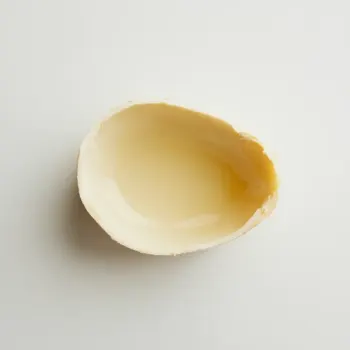
Substitutes for lard in cooking include butter and shortening for baking, vegetable and peanut oil for frying, coconut oil and beef tallow for savory recipes, olive oil and bacon fat for sautéing and roasting, and ghee and avocado oil for dietary-specific recipes.
Butter is a common substitute for lard in baking, offering a rich flavor and tender crumb. Use it in a 1:1 ratio but expect a slightly different flavor profile. Butter yields a less flaky texture than lard. Popular brands include Land O'Lakes and Kerrygold.
Vegetable shortening can mimic lard's flaky texture in pastry recipes. It's flavorless, making it a versatile option. Use it in a 1:1 ratio. Keep in mind that it may produce a slightly different mouthfeel. Crisco is a well-known brand.
Vegetable oil is a suitable substitute for lard in frying due to its high smoke point. Use it in a 1:1 ratio by volume. Expect a lighter texture and less saturated fat. Brands like Wesson and Mazola are commonly used.
Peanut oil, with its high smoke point, is ideal for deep-frying. It imparts a nutty flavor. Use in a 1:1 ratio by volume. It's excellent for achieving a crispy texture. LouAna and Planters are popular brands.
Coconut oil can replace lard in savory recipes, especially for a vegetarian option. Use it in a 1:1 ratio but expect a slightly sweet, coconut flavor. It's solid at room temperature, like lard. Nutiva and Spectrum are brands to look for.
Beef tallow is another animal-based fat that can substitute for lard. Use in a 1:1 ratio for a similar mouthfeel and flavor depth. It works well in high-heat cooking. Epic and Fatworks are brands that offer beef tallow.
Olive oil provides a healthier alternative with a distinct flavor. Use it in a 1:1 ratio by volume. It's best for sautéing over lower heat due to its lower smoke point. Expect a different flavor profile. Bertolli and Filippo Berio are recommended brands.
Bacon fat can be a direct substitute for lard, offering a similar flavor profile. Use sparingly, as it's rich in taste. It works well for roasting vegetables and meats. No specific brands, typically homemade from cooked bacon.
Ghee is clarified butter that's suitable for those who are lactose intolerant and follows a keto diet. Use in a 1:1 ratio. It has a high smoke point and rich nutty flavor. Brands like 4th & Heart and Organic Valley are options.
Avocado oil, with its high smoke point and heart-healthy fats, is great for gluten-free and vegetarian cooking. Use it in a 1:1 ratio by volume. It's also keto-friendly. Brands like Chosen Foods and Primal Kitchen are well-regarded.

Your ultimate Recipe Box, Meal Planner, and Cooking Class all in one
| Recipe Category | Substitutes |
|---|---|
| Baking | Butter, Shortening |
| Frying | Vegetable Oil, Peanut Oil |
| Savory Recipes | Coconut Oil, Beef Tallow |
| Sautéing and Roasting | Olive Oil, Bacon Fat |
| Dietary-Specific Recipes | Ghee, Avocado Oil |
While lard provides unique flavor and texture to dishes, the substitutes listed can effectively fulfill its role in various culinary applications, often providing healthier alternatives or accommodating dietary restrictions. Each substitute has its own characteristics to consider, allowing you to adapt recipes to suit your preferences and needs.